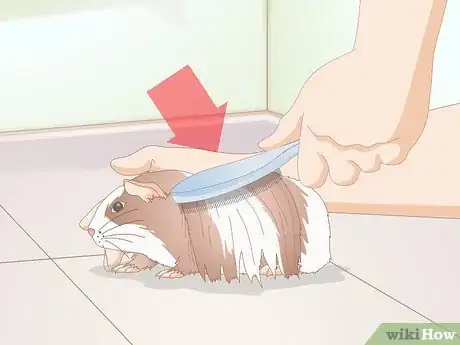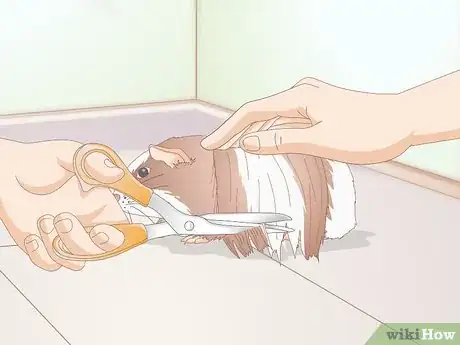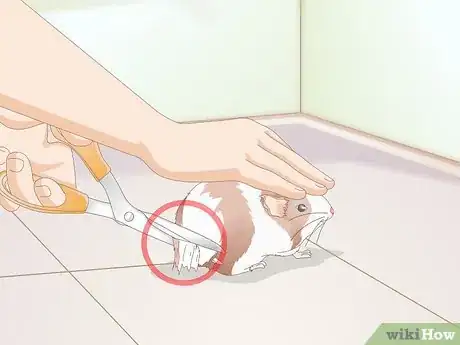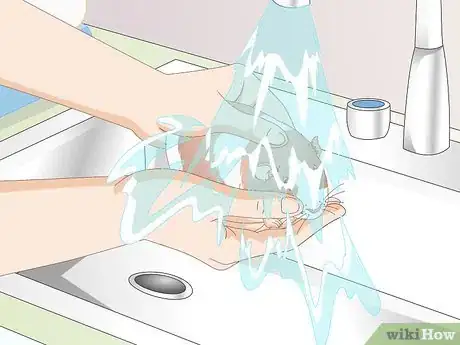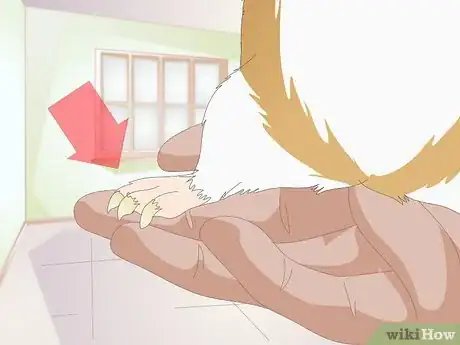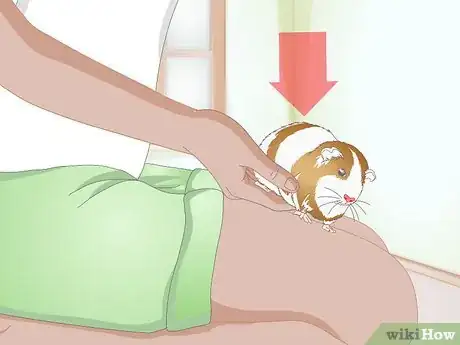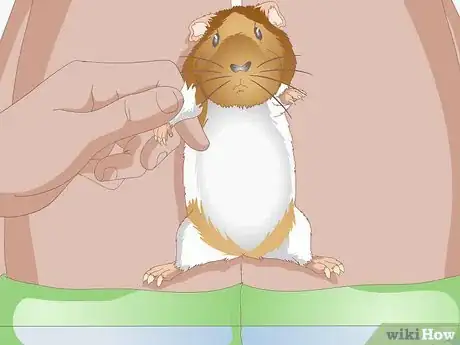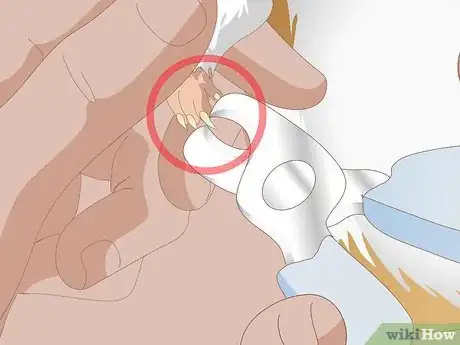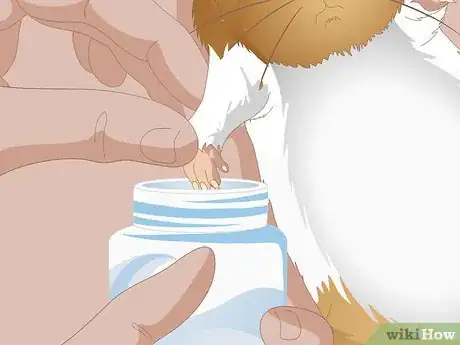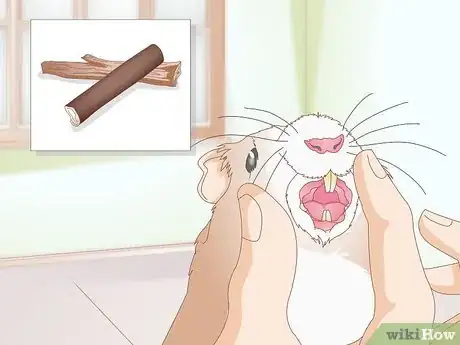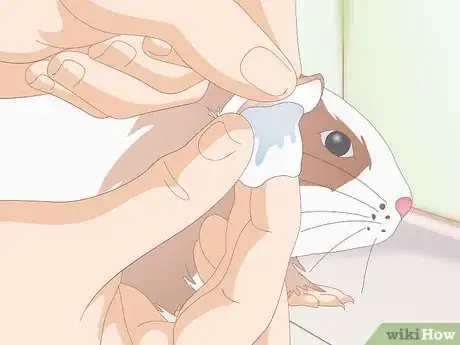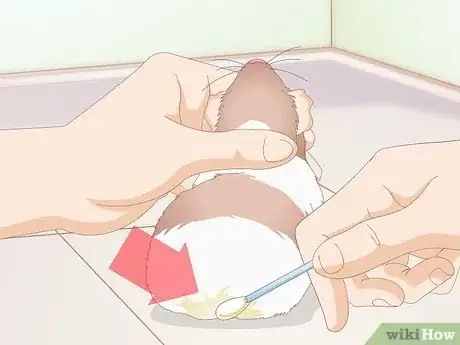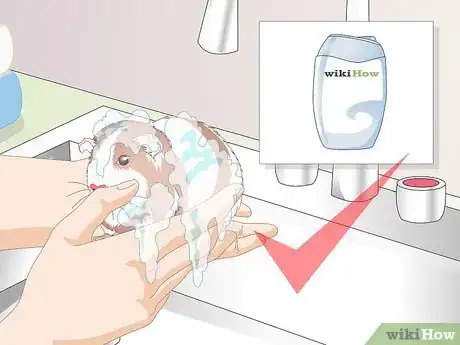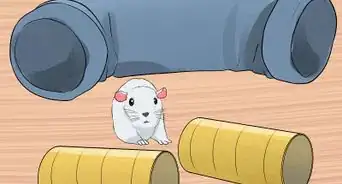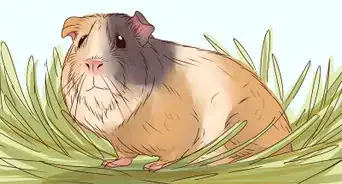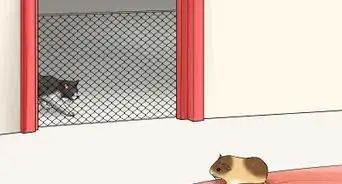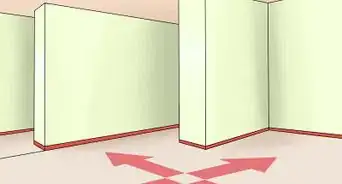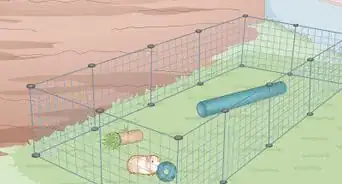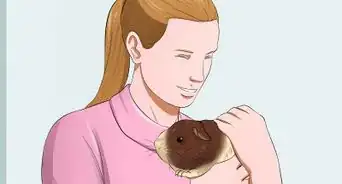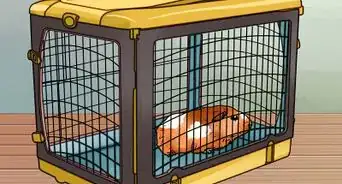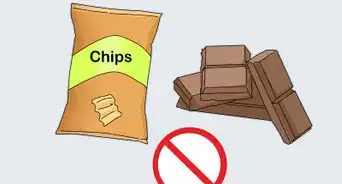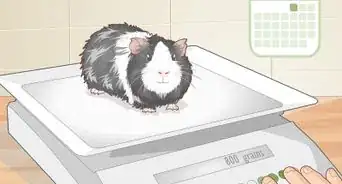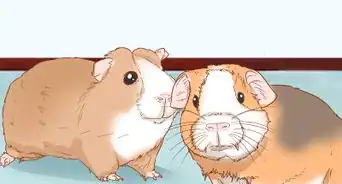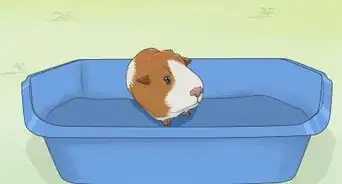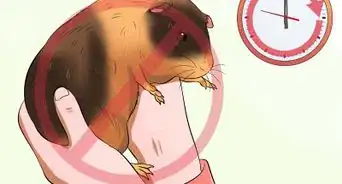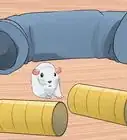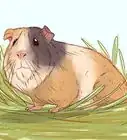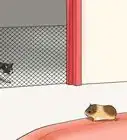This article was co-authored by Pippa Elliott, MRCVS. Dr. Elliott, BVMS, MRCVS is a veterinarian with over 30 years of experience in veterinary surgery and companion animal practice. She graduated from the University of Glasgow in 1987 with a degree in veterinary medicine and surgery. She has worked at the same animal clinic in her hometown for over 20 years.
There are 8 references cited in this article, which can be found at the bottom of the page.
wikiHow marks an article as reader-approved once it receives enough positive feedback. In this case, 90% of readers who voted found the article helpful, earning it our reader-approved status.
This article has been viewed 59,386 times.
Although they are small and may appear low maintenance, guinea pigs are relatively sensitive animals that need a fair amount of grooming. You will need to regularly maintain your animal’s hair and nails to ensure that they are healthy and happy. You will also have to meet a host of other grooming concerns that include maintaining the proper length of guinea pig’s teeth and making sure that its grease gland is cleaned. If you care for its hair, cut its nails, and meet its other grooming needs, you will help your guinea pig look its best and live a healthy life.
Steps
Caring for Your Guinea Pig’s Hair
-
1Brush its hair regularly. Long-haired guinea pigs require daily brushing to prevent their fur from getting tangled and developing knots. If you do come across any knots, a comb may be handy to remove them. For short-haired guinea pigs, you only need to brush and comb their hair once a month.[1]
- You can buy guinea pig specific brushes and combs at most pet stores.
- If you do not brush your guinea pig regularly, its hair may become so knotted that your only solution is to cut it off.
-
2Cut your guinea pig’s hair. A long-haired guinea pig’s hair grows about an inch a month and will require regular cutting. Once its hair begins to touch the ground, trim the hair so that it does not drag. You may also want to cut your long-haired guinea pig's hair to a comfortable length in the summer. This will keep it from overheating.[2]
- Keeping your guinea pig’s hair off of the ground will prevent it from becoming wet with urine and feces that may be on the ground in its cage. Regular trimming can prevent health issues, such as urinary tract infections, associated with bacteria.
- When giving your guinea pig a trim, consider using round-tipped scissors with guide combs to avoid cutting its hair too short.
- If you and your guinea pig live somewhere that is not climate controlled in the summer, you will want to keep your pet comfortable by cutting its hair. Long-haired guinea pigs are susceptible to overheating.
Advertisement -
3Trim your guinea pig’s backside. Some long-haired guinea pigs are prone to urinary tract infections because the hair on their backside collects bacteria. This can be the result of it coming into contact with the ground and being soiled with urine and feces. Because of this, you mustn't neglect to trim your animal’s backside.[3]
-
4Bathe it. Guinea pigs rarely need baths. Some never need to be washed. However, your guinea pig may become stinky and need a bath. Place your guinea pig in a small bowl of warm water and gently scrub them with a shampoo for small animals. Be sure to quickly dry the animal with a towel to avoid it getting too cold and becoming sick.
- If you want to kill two birds with one stone, try cutting your guinea pig's hair while it’s still wet from the bath. Wet hair is easier to cut than dry hair.[4]
- If your guinea pig has dandruff is itchy or sheds more than normal, it may have a parasite or fungal infection on its skin. Take your animal to the veterinarian and do not shampoo it unless the vet gives you a medicated shampoo. Washing it may dry out its skin more and make the condition worse.
Cutting Your Guinea Pig’s Nails
-
1Know when to trim your animal’s nails. Guinea pig nails grow constantly and need regular grooming. You should cut your guinea pig’s nails once every four to six weeks to keep them maintained. You can cut the nails yourself or take the animal to a veterinarian for clipping.[5]
- The veterinarian or a vet tech will likely show you how to trim your guinea pig’s nails if you are unsure.
- You can use a pair of human nail clippers or a blunt tip pair designed specifically for trimming the nails of small animals. The smaller opening of the human clippers makes it more difficult to cut off too much of your guinea pig’s nail.
-
2Place the guinea pig in your lap or on a flat surface. When you go to trim your animal’s nails, sit the guinea pig in your lap or on a stable surface, like a counter or a table. Hold the guinea pig in place with your non-dominant hand and use your other hand to operate the clippers.[6]
- If your guinea pig squirms a lot, you might want to ask someone to hold the guinea pig while you trim its nails.
-
3Hold its foot. Grab one of its feet and hold it firmly in your hand. You want to hold it firmly enough that it does not move while you are cutting its nails, but not so tightly that you hurt its foot. Try to spread the foot between your fingers to make it easier to get to the nails.[7]
- If your animal is making noises like it is in pain, you may be squeezing its foot too tightly.
-
4Cut the nail at an angle. Inside a guinea pig’s nail is a blood vessel known as the “quick.” You will want to cut your animal’s nails at an angle to avoid cutting into the quick, as cutting the quick can be very painful and result in bleeding. Try clipping the tip of the nail at a 45-degree angle to avoid cutting into the quick.[8]
- If you animal’s nails are light-colored, you should be able to see the quick as a pink coloring in the nail. However, if they are dark, you may need to shine a light up from underneath them to see the quick.
- If you do not regularly cut your guinea pig’s nails, they may curl back into the pads of the foot and result in severe pain and possibly infection.[9]
-
5Dip its nail in styptic powder if you cut too deeply. If you cut into your guinea pig’s quick, dip the wound into styptic powder, which is an antihemorrhagic agent. This will stop the bleeding and help numb the pain from the cut.[10]
Practicing Other Grooming Habits
-
1Take care of your guinea pig’s teeth. Your guinea pig’s teeth will grow throughout its life and they may get too long and become painful. To prevent this, you should provide your guinea pig with things to chew on like unpainted woodchips, straw, twigs, or even empty paper towel rolls. Along with unlimited hay. These things will help naturally wear down your guinea pig’s teeth and keep them from getting too long.[11]
- You should check your guinea pig’s teeth once a month to make that they are not getting too long.
- If your guinea pig stops eating, its teeth may be sore and preventing it from eating properly. Consult your veterinarian about getting your animal's teeth clipped.[12]
-
2Check your guinea pig’s ears. To keep your animal’s ears from becoming infected, you should check them every week and clean them every two weeks. Use a soft cloth to gently wipe the part of the ear that you can see. Be careful not to delve too deep into the animal's ear, as this can hurt it and impact debris in the ear canal, which can, in turn, result in an infection.
- A drop of mineral oil on the cloth may also help with the cleaning process.
-
3Clean its grease gland. Both male and female guinea pigs have a grease gland on their lower back. Male guinea pigs are particularly greasy and secrete a sticky and pungent oil from this area when they are courting females or fighting other males. This grease can build up on your guinea pig’s hair and skin, making your animal smell bad and lead to an infection of the gland. Use a cotton swab with a non-abrasive oil or soap to clean the area of grease.[13]
-
4Prevent fleas. Your guinea pig may get fleas at some point. The best way to deal with this problem is to bathe your animal and scrub it with shampoo. To avoid fleas in general, you should regularly clean your guinea pigs cage and change out its bedding.[14]
- Do not use flea removers designed for other animals. This may make your guinea pig sick and kill it.
References
- ↑ http://www.banfield.com/pet-health-resources/pet-health-concerns/small-pets/small-mammals/guinea-pig-care-guide
- ↑ http://www.guinealynx.info/grooming.html
- ↑ http://www.guinealynx.info/grooming.html
- ↑ http://guineapigsaustralia.com.au/grooming.htm
- ↑ http://www.guinealynx.info/nails.html
- ↑ http://www.guinealynx.info/nails.html
- ↑ http://www.guinealynx.info/nails.html
- ↑ http://www.guinealynx.info/nails.html
- ↑ http://www.banfield.com/pet-health-resources/pet-health-concerns/small-pets/small-mammals/guinea-pig-care-guide
- ↑ http://www.guinealynx.info/nails.html
- ↑ http://www.banfield.com/pet-health-resources/pet-health-concerns/small-pets/small-mammals/guinea-pig-care-guide
- ↑ http://guineapigowner.com/guinea-pig-grooming/
- ↑ http://animals.mom.me/groom-guinea-pig-show-7927.html
- ↑ http://animals.mom.me/guinea-pig-flea-treatments-2029.html
About This Article
To groom a guinea pig, start by brushing its hair once a day if you have a long-haired guinea pig, or once a month if your guinea pig is short-haired. Then, cut your long-haired guinea pig’s hair when it begins to drag on the ground. Additionally, trim your pet’s nails with clippers every 4-6 weeks, and clean its ears with a soft cloth every 2 weeks. You should also give your guinea pig things to chew, like woodchips, straw, or empty paper towel rolls, to wear down their teeth so they don’t get too long. For tips from our Veterinary reviewer on how to clean your guinea pig’s grease gland, scroll down!
